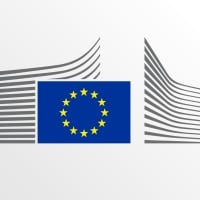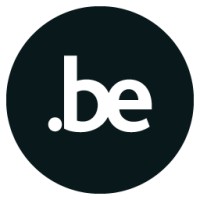
SERNAC Chile Company Cyber Security Posture
sernac.clEl Servicio Nacional del Consumidor (SERNAC) es la agencia del Estado de Chile, encargada de velar por la protección de los derechos de los consumidores, establecidos en la Ley N° 19.496. El SERNAC intercede o media en los conflictos de consumo entre las empresas y los consumidores. Cuando usted reclama en el SERNAC, nos comunicamos con la empresa para informarle la situación existente y solicitar una respuesta al caso. Para saber más sobre cómo ejercer sus derechos como consumidor/a, vea la información sobre el Reclamo o Mediación individual. Misión del SERNAC Informar, educar y proteger a los consumidores ciudadanos, mediante un marco técnico de eficacia, eficiencia y transparencia de la acción institucional y de los mercados, y del rol responsable, activo y participativo de cada uno de sus actores. Visión del SERNAC Trabajaremos por ser una institución reconocida nacional e internacionalmente como líder y garante del sistema de protección al consumidor; cercana a la ciudadanía y que responde con eficacia a sus necesidades. Una institución capaz de trabajar con los distintos actores del mercado para disminuir las asimetrías que afectan al consumidor; fuerte en el ejercicio de sus atribuciones; proactiva, moderna y capaz de adelantarse a los temas emergentes. Todo ello incorporando la excelencia y mejora continua de sus procesos, con trabajadores comprometidos gracias a las oportunidades de desarrollo y un buen entorno laboral.
SERNAC Chile Company Details
sernac-chile
217 employees
19520
922
Government Administration
sernac.cl
Scan still pending
SER_2537066
In-progress
Between 900 and 1000
This score is AI-generated and less favored by cyber insurers, who prefer the TPRM score.
 SERNAC Chile Global Score
SERNAC Chile Global Score.png)

SERNAC Chile Company Scoring based on AI Models
| Model Name | Date | Description | Current Score Difference | Score |
|---|---|---|---|---|
| AVERAGE-Industry | 03-12-2025 | This score represents the average cybersecurity rating of companies already scanned within the same industry. It provides a benchmark to compare an individual company's security posture against its industry peers. | N/A | Between 900 and 1000 |
SERNAC Chile Company Cyber Security News & History
| Entity | Type | Severity | Impact | Seen | Url ID | Details | View |
|---|---|---|---|---|---|---|---|
| SERNAC Chile | Cyber Attack | 100 | 5 | 08/2022 | SER1840111122 | Link | |
Rankiteo Explanation : Attack threatening the organization's existenceDescription: The National Consumer Service (SERNAC) is the public service in Chile that is responsible for safeguarding and promoting consumer rights, website was down due to a cyberattack. SERNAC coordinated its investigation and response with the Computer Emergency Response Team (CSIRT), the division of the Ministry of the Interior in charge of cybersecurity. Consumers can submit claims or citizen alerts directly at SERNAC offices while the site is unavailable. Every regional capital has a SERNAC office. By phoning SERNAC at 800 700 100, consumers can also submit claims or alarms. | |||||||
| SERNAC Chile | Ransomware | 100 | 5 | 08/2022 | SER2154181122 | Link | |
Rankiteo Explanation : Attack threatening the organization's existenceDescription: The Chilean National Consumer Service (SERNAC) was targeted in a ransomware attack in August 2022. The incident consisted of a ransomware attack on the Microsoft and VMware ESXi servers of SERNAC's corporate networks, encrypting the data on the compromised equipment, thus interrupting its systems and online services. | |||||||
SERNAC Chile Company Subsidiaries

El Servicio Nacional del Consumidor (SERNAC) es la agencia del Estado de Chile, encargada de velar por la protección de los derechos de los consumidores, establecidos en la Ley N° 19.496. El SERNAC intercede o media en los conflictos de consumo entre las empresas y los consumidores. Cuando usted reclama en el SERNAC, nos comunicamos con la empresa para informarle la situación existente y solicitar una respuesta al caso. Para saber más sobre cómo ejercer sus derechos como consumidor/a, vea la información sobre el Reclamo o Mediación individual. Misión del SERNAC Informar, educar y proteger a los consumidores ciudadanos, mediante un marco técnico de eficacia, eficiencia y transparencia de la acción institucional y de los mercados, y del rol responsable, activo y participativo de cada uno de sus actores. Visión del SERNAC Trabajaremos por ser una institución reconocida nacional e internacionalmente como líder y garante del sistema de protección al consumidor; cercana a la ciudadanía y que responde con eficacia a sus necesidades. Una institución capaz de trabajar con los distintos actores del mercado para disminuir las asimetrías que afectan al consumidor; fuerte en el ejercicio de sus atribuciones; proactiva, moderna y capaz de adelantarse a los temas emergentes. Todo ello incorporando la excelencia y mejora continua de sus procesos, con trabajadores comprometidos gracias a las oportunidades de desarrollo y un buen entorno laboral.
Access Data Using Our API

Get company history
.png)
SERNAC Chile Cyber Security News
Chile: Bill to reform Chilean data protection law - Key provisions and updates
The Chilean Bill No. 11144-07 aims to reform the outdated data protection law by incorporating GDPR principles and establishing a Personal ...

SERNAC Chile Similar Companies

European Commission
The Commission represents and upholds the interests of the EU as a whole, and is independent of national governments. The European Commission prepares legislation for adoption by the Council (representing the member countries) and the Parliament (representing the citizens). It administers the budge

Workingfor.be
Workingfor.be is the job platform of the federal administration. Here, you will find a wide variety of jobs in different fields of profession. Every day thousands of our employees help build tomorrow's society. When you choose the federal administration, you choose an employer who embraces you

Salford City Council
Salford City Council exists to serve its residents and provides a complete and comprehensive range of services and facilities. The council's mission statement is "to create the best possible quality of life for the people of Salford." Salford is a city constantly changing and moving into an exciti

Agencia de Recaudación y Control Aduanero
La Administración Federal de Ingresos Públicos es el ente encargado de ejecutar las políticas impulsadas por el Poder Ejecutivo Nacional en materia tributaria, aduanera y de recaudación de los recursos de la seguridad social. Este organismo creado en el año 1997 (Decreto 618/1997) está inte

Consejo Nacional Electoral
Definición: El Consejo Nacional Electoral es el ente rector del Poder Electoral, responsable de la transparencia de los procesos electorales y refrendarios; garantiza a los venezolanos la eficiente organización de todos los actos electorales que se realicen en el país y en particular, la claridad

City of Philadelphia
With a workforce of 30,000 people, and opportunities in 1,000 different job categories, the City of Philadelphia is one of the largest employers in Southeastern Pennsylvania. As an employer, we operate through the guiding principles of service, integrity, respect, accountability, collaboration, dive

Frequently Asked Questions (FAQ) on Cybersecurity Incidents
SERNAC Chile CyberSecurity History Information
Total Incidents: According to Rankiteo, SERNAC Chile has faced 2 incidents in the past.
Incident Types: The types of cybersecurity incidents that have occurred include ['Cyber Attack', 'Ransomware'].
Total Financial Loss: The total financial loss from these incidents is estimated to be {total_financial_loss}.
Cybersecurity Posture: The company's overall cybersecurity posture is described as El Servicio Nacional del Consumidor (SERNAC) es la agencia del Estado de Chile, encargada de velar por la protección de los derechos de los consumidores, establecidos en la Ley N° 19.496. El SERNAC intercede o media en los conflictos de consumo entre las empresas y los consumidores. Cuando usted reclama en el SERNAC, nos comunicamos con la empresa para informarle la situación existente y solicitar una respuesta al caso. Para saber más sobre cómo ejercer sus derechos como consumidor/a, vea la información sobre el Reclamo o Mediación individual. Misión del SERNAC Informar, educar y proteger a los consumidores ciudadanos, mediante un marco técnico de eficacia, eficiencia y transparencia de la acción institucional y de los mercados, y del rol responsable, activo y participativo de cada uno de sus actores. Visión del SERNAC Trabajaremos por ser una institución reconocida nacional e internacionalmente como líder y garante del sistema de protección al consumidor; cercana a la ciudadanía y que responde con eficacia a sus necesidades. Una institución capaz de trabajar con los distintos actores del mercado para disminuir las asimetrías que afectan al consumidor; fuerte en el ejercicio de sus atribuciones; proactiva, moderna y capaz de adelantarse a los temas emergentes. Todo ello incorporando la excelencia y mejora continua de sus procesos, con trabajadores comprometidos gracias a las oportunidades de desarrollo y un buen entorno laboral..
Detection and Response: The company detects and responds to cybersecurity incidents through {description_of_detection_and_response_process}.
Incident Details
Incident 1: Ransomware Attack
Title: {Incident_Title}
Description: {Brief_description_of_the_incident}
Date Detected: {Detection_Date}
Date Publicly Disclosed: {Disclosure_Date}
Date Resolved: {Resolution_Date}
Type: {Type_of_Attack}
Attack Vector: {Attack_Vector}
Vulnerability Exploited: {Vulnerability}
Threat Actor: {Threat_Actor}
Motivation: {Motivation}
Incident 2: Data Breach
Title: {Incident_Title}
Description: {Brief_description_of_the_incident}
Date Detected: {Detection_Date}
Date Publicly Disclosed: {Disclosure_Date}
Date Resolved: {Resolution_Date}
Type: {Type_of_Attack}
Attack Vector: {Attack_Vector}
Vulnerability Exploited: {Vulnerability}
Threat Actor: {Threat_Actor}
Motivation: {Motivation}
Common Attack Types: As of now, the company has not encountered any reported incidents involving common cyberattacks.
Identification of Attack Vectors: The company identifies the attack vectors used in incidents through {description_of_identification_process}.
Impact of the Incidents
Incident 1: Ransomware Attack
Financial Loss: {Financial_Loss}
Data Compromised: {Data_Compromised}
Systems Affected: {Systems_Affected}
Downtime: {Downtime}
Operational Impact: {Operational_Impact}
Conversion Rate Impact: {Conversion_Rate_Impact}
Revenue Loss: {Revenue_Loss}
Customer Complaints: {Customer_Complaints}
Brand Reputation Impact: {Brand_Reputation_Impact}
Legal Liabilities: {Legal_Liabilities}
Identity Theft Risk: {Identity_Theft_Risk}
Payment Information Risk: {Payment_Information_Risk}
Incident 2: Data Breach
Financial Loss: {Financial_Loss}
Data Compromised: {Data_Compromised}
Systems Affected: {Systems_Affected}
Downtime: {Downtime}
Operational Impact: {Operational_Impact}
Conversion Rate Impact: {Conversion_Rate_Impact}
Revenue Loss: {Revenue_Loss}
Customer Complaints: {Customer_Complaints}
Brand Reputation Impact: {Brand_Reputation_Impact}
Legal Liabilities: {Legal_Liabilities}
Identity Theft Risk: {Identity_Theft_Risk}
Payment Information Risk: {Payment_Information_Risk}
Average Financial Loss: The average financial loss per incident is {average_financial_loss}.
Commonly Compromised Data Types: The types of data most commonly compromised in incidents are {list_of_commonly_compromised_data_types}.
Incident 1: Ransomware Attack
Entity Name: {Entity_Name}
Entity Type: {Entity_Type}
Industry: {Industry}
Location: {Location}
Size: {Size}
Customers Affected: {Customers_Affected}
Incident 2: Data Breach
Entity Name: {Entity_Name}
Entity Type: {Entity_Type}
Industry: {Industry}
Location: {Location}
Size: {Size}
Customers Affected: {Customers_Affected}
Response to the Incidents
Incident 1: Ransomware Attack
Incident Response Plan Activated: {Yes/No}
Third Party Assistance: {Yes/No}
Law Enforcement Notified: {Yes/No}
Containment Measures: {Containment_Measures}
Remediation Measures: {Remediation_Measures}
Recovery Measures: {Recovery_Measures}
Communication Strategy: {Communication_Strategy}
Adaptive Behavioral WAF: {Adaptive_Behavioral_WAF}
On-Demand Scrubbing Services: {On_Demand_Scrubbing_Services}
Network Segmentation: {Network_Segmentation}
Enhanced Monitoring: {Enhanced_Monitoring}
Incident 2: Data Breach
Incident Response Plan Activated: {Yes/No}
Third Party Assistance: {Yes/No}
Law Enforcement Notified: {Yes/No}
Containment Measures: {Containment_Measures}
Remediation Measures: {Remediation_Measures}
Recovery Measures: {Recovery_Measures}
Communication Strategy: {Communication_Strategy}
Adaptive Behavioral WAF: {Adaptive_Behavioral_WAF}
On-Demand Scrubbing Services: {On_Demand_Scrubbing_Services}
Network Segmentation: {Network_Segmentation}
Enhanced Monitoring: {Enhanced_Monitoring}
Incident Response Plan: The company's incident response plan is described as {description_of_incident_response_plan}.
Third-Party Assistance: The company involves third-party assistance in incident response through {description_of_third_party_involvement}.
Data Breach Information
Incident 2: Data Breach
Type of Data Compromised: {Type_of_Data}
Number of Records Exposed: {Number_of_Records}
Sensitivity of Data: {Sensitivity_of_Data}
Data Exfiltration: {Yes/No}
Data Encryption: {Yes/No}
File Types Exposed: {File_Types}
Personally Identifiable Information: {Yes/No}
Prevention of Data Exfiltration: The company takes the following measures to prevent data exfiltration: {description_of_prevention_measures}.
Handling of PII Incidents: The company handles incidents involving personally identifiable information (PII) through {description_of_handling_process}.
Ransomware Information
Incident 1: Ransomware Attack
Ransom Demanded: {Ransom_Amount}
Ransom Paid: {Ransom_Paid}
Ransomware Strain: {Ransomware_Strain}
Data Encryption: {Yes/No}
Data Exfiltration: {Yes/No}
Ransom Payment Policy: The company's policy on paying ransoms in ransomware incidents is described as {description_of_ransom_payment_policy}.
Data Recovery from Ransomware: The company recovers data encrypted by ransomware through {description_of_data_recovery_process}.
Regulatory Compliance
Incident 1: Ransomware Attack
Regulations Violated: {Regulations_Violated}
Fines Imposed: {Fines_Imposed}
Legal Actions: {Legal_Actions}
Regulatory Notifications: {Regulatory_Notifications}
Incident 2: Data Breach
Regulations Violated: {Regulations_Violated}
Fines Imposed: {Fines_Imposed}
Legal Actions: {Legal_Actions}
Regulatory Notifications: {Regulatory_Notifications}
Regulatory Frameworks: The company complies with the following regulatory frameworks regarding cybersecurity: {list_of_regulatory_frameworks}.
Ensuring Regulatory Compliance: The company ensures compliance with regulatory requirements through {description_of_compliance_measures}.
Lessons Learned and Recommendations
Incident 1: Ransomware Attack
Lessons Learned: {Lessons_Learned}
Incident 2: Data Breach
Lessons Learned: {Lessons_Learned}
Incident 1: Ransomware Attack
Recommendations: {Recommendations}
Incident 2: Data Breach
Recommendations: {Recommendations}
Key Lessons Learned: The key lessons learned from past incidents are {list_of_key_lessons_learned}.
Implemented Recommendations: The company has implemented the following recommendations to improve cybersecurity: {list_of_implemented_recommendations}.
References
Additional Resources: Stakeholders can find additional resources on cybersecurity best practices at {list_of_additional_resources}.
Investigation Status
Incident 1: Ransomware Attack
Investigation Status: {Investigation_Status}
Incident 2: Data Breach
Investigation Status: {Investigation_Status}
Communication of Investigation Status: The company communicates the status of incident investigations to stakeholders through {description_of_communication_process}.
Stakeholder and Customer Advisories
Incident 1: Ransomware Attack
Stakeholder Advisories: {Stakeholder_Advisories}
Customer Advisories: {Customer_Advisories}
Incident 2: Data Breach
Stakeholder Advisories: {Stakeholder_Advisories}
Customer Advisories: {Customer_Advisories}
Advisories Provided: The company provides the following advisories to stakeholders and customers following an incident: {description_of_advisories_provided}.
Initial Access Broker
Incident 1: Ransomware Attack
Entry Point: {Entry_Point}
Reconnaissance Period: {Reconnaissance_Period}
Backdoors Established: {Backdoors_Established}
High Value Targets: {High_Value_Targets}
Data Sold on Dark Web: {Yes/No}
Incident 2: Data Breach
Entry Point: {Entry_Point}
Reconnaissance Period: {Reconnaissance_Period}
Backdoors Established: {Backdoors_Established}
High Value Targets: {High_Value_Targets}
Data Sold on Dark Web: {Yes/No}
Monitoring and Mitigation of Initial Access Brokers: The company monitors and mitigates the activities of initial access brokers through {description_of_monitoring_and_mitigation_measures}.
Post-Incident Analysis
Incident 1: Ransomware Attack
Root Causes: {Root_Causes}
Corrective Actions: {Corrective_Actions}
Incident 2: Data Breach
Root Causes: {Root_Causes}
Corrective Actions: {Corrective_Actions}
Post-Incident Analysis Process: The company's process for conducting post-incident analysis is described as {description_of_post_incident_analysis_process}.
Corrective Actions Taken: The company has taken the following corrective actions based on post-incident analysis: {list_of_corrective_actions_taken}.
Additional Questions
General Information
Ransom Payment History: The company has {paid/not_paid} ransoms in the past.
Last Ransom Demanded: The amount of the last ransom demanded was {last_ransom_amount}.
Last Attacking Group: The attacking group in the last incident was {last_attacking_group}.
Incident Details
Most Recent Incident Detected: The most recent incident detected was on {most_recent_incident_detected_date}.
Most Recent Incident Publicly Disclosed: The most recent incident publicly disclosed was on {most_recent_incident_publicly_disclosed_date}.
Most Recent Incident Resolved: The most recent incident resolved was on {most_recent_incident_resolved_date}.
Impact of the Incidents
Highest Financial Loss: The highest financial loss from an incident was {highest_financial_loss}.
Most Significant Data Compromised: The most significant data compromised in an incident was {most_significant_data_compromised}.
Most Significant System Affected: The most significant system affected in an incident was {most_significant_system_affected}.
Response to the Incidents
Third-Party Assistance in Most Recent Incident: The third-party assistance involved in the most recent incident was {third_party_assistance_in_most_recent_incident}.
Containment Measures in Most Recent Incident: The containment measures taken in the most recent incident were {containment_measures_in_most_recent_incident}.
Data Breach Information
Most Sensitive Data Compromised: The most sensitive data compromised in a breach was {most_sensitive_data_compromised}.
Number of Records Exposed: The number of records exposed in the most significant breach was {number_of_records_exposed}.
Ransomware Information
Highest Ransom Demanded: The highest ransom demanded in a ransomware incident was {highest_ransom_demanded}.
Highest Ransom Paid: The highest ransom paid in a ransomware incident was {highest_ransom_paid}.
Regulatory Compliance
Highest Fine Imposed: The highest fine imposed for a regulatory violation was {highest_fine_imposed}.
Most Significant Legal Action: The most significant legal action taken for a regulatory violation was {most_significant_legal_action}.
Lessons Learned and Recommendations
Most Significant Lesson Learned: The most significant lesson learned from past incidents was {most_significant_lesson_learned}.
Most Significant Recommendation Implemented: The most significant recommendation implemented to improve cybersecurity was {most_significant_recommendation_implemented}.
References
Most Recent Source: The most recent source of information about an incident is {most_recent_source}.
Most Recent URL for Additional Resources: The most recent URL for additional resources on cybersecurity best practices is {most_recent_url}.
Investigation Status
Current Status of Most Recent Investigation: The current status of the most recent investigation is {current_status_of_most_recent_investigation}.
Stakeholder and Customer Advisories
Most Recent Stakeholder Advisory: The most recent stakeholder advisory issued was {most_recent_stakeholder_advisory}.
Most Recent Customer Advisory: The most recent customer advisory issued was {most_recent_customer_advisory}.
Initial Access Broker
Most Recent Entry Point: The most recent entry point used by an initial access broker was {most_recent_entry_point}.
Most Recent Reconnaissance Period: The most recent reconnaissance period for an incident was {most_recent_reconnaissance_period}.
Post-Incident Analysis
Most Significant Root Cause: The most significant root cause identified in post-incident analysis was {most_significant_root_cause}.
Most Significant Corrective Action: The most significant corrective action taken based on post-incident analysis was {most_significant_corrective_action}.
What Do We Measure?
















Every week, Rankiteo analyzes billions of signals to give organizations a sharper, faster view of emerging risks. With deeper, more actionable intelligence at their fingertips, security teams can outpace threat actors, respond instantly to Zero-Day attacks, and dramatically shrink their risk exposure window.
These are some of the factors we use to calculate the overall score:
Identify exposed access points, detect misconfigured SSL certificates, and uncover vulnerabilities across the network infrastructure.
Gain visibility into the software components used within an organization to detect vulnerabilities, manage risk, and ensure supply chain security.
Monitor and manage all IT assets and their configurations to ensure accurate, real-time visibility across the company's technology environment.
Leverage real-time insights on active threats, malware campaigns, and emerging vulnerabilities to proactively defend against evolving cyberattacks.




